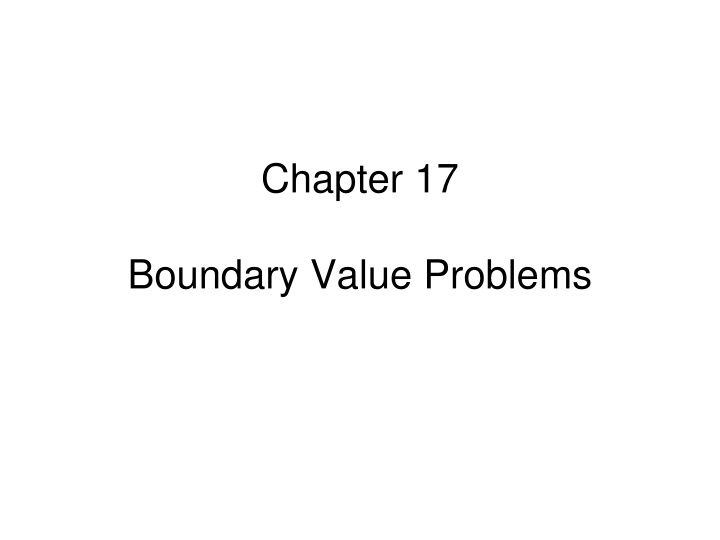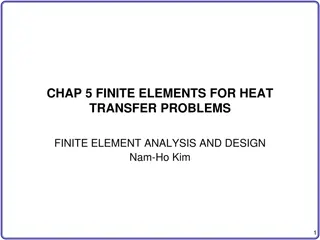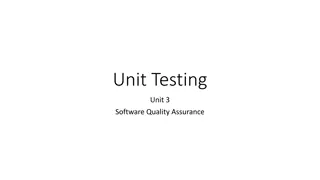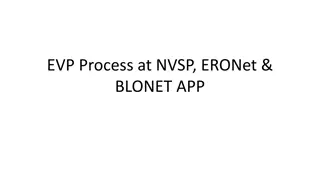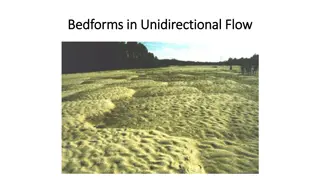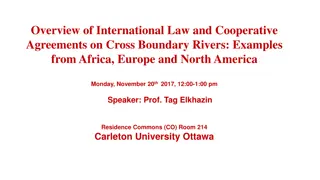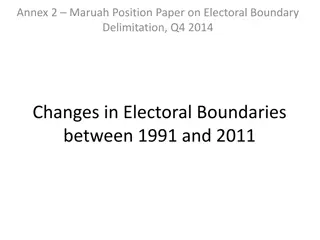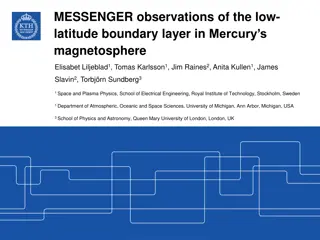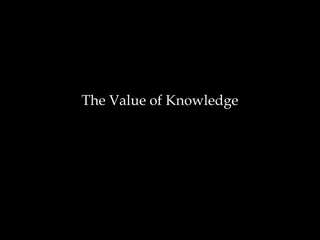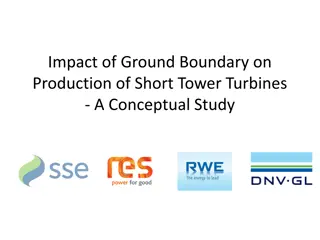Boundary Value Problems
Explore boundary value problems, eigenvalue problems, shooting method, Newton-Raphson root finding, and relaxation methods in solving differential equations. Learn how to apply these numerical techniques to tackle challenging mathematical problems efficiently.
Download Presentation

Please find below an Image/Link to download the presentation.
The content on the website is provided AS IS for your information and personal use only. It may not be sold, licensed, or shared on other websites without obtaining consent from the author.If you encounter any issues during the download, it is possible that the publisher has removed the file from their server.
You are allowed to download the files provided on this website for personal or commercial use, subject to the condition that they are used lawfully. All files are the property of their respective owners.
The content on the website is provided AS IS for your information and personal use only. It may not be sold, licensed, or shared on other websites without obtaining consent from the author.
E N D
Presentation Transcript
Chapter 17 Boundary Value Problems
Standard Form of Two-Point Boundary Value Problem ( ) dx dy x = = ( , , , , ), 1,2, , i f x y y y i N 1 2 i N = = At point : ( , x y y , , , ) 0, 1,2, = , x B y j n 1 1 1 x y y 1 2 1 n j N y = At point : ( , , , , ) 0, 1,2, , x B k 2 2 2 1 2 2 k N In total, there are n1+n2= N boundary conditions.
Example, Eigenvalue Problem 2 ( ) d y x dx = ( ) y x is also unknown. 2 = = with (0) 0, (1) y 0 y = = = Let y y y y , ', y y y y y 1 2 3 1 = = = y 2 3 1 y y 2 0 0, = 3 = = (0) (1) 0, (0) (1) y y y 1 1 3 3
Shooting Method Use Newton- Raphson to get the target
The Shooting Method (start) At the starting point x1 we have n1 conditions to satisfy, thus we have n2=N-n1 freely variable starting parameters Let ( ) ( ; , , , i i y x y x V V V = = ) 1,2, , i N 1 1 1 2 n 2 be the initial values of y which is parametrized by n2V-values without constraint.
The Shooting Method (discrepancy) Using any standard ODE solver to find the solution at x2. Compute a difference between the required boundary condition and actual value: = V y = ( ) ( , ( x )) 1,2, , F B x k n 2 2 2 2 k k Our objective is to search the root of F with respect to V.
Newton-Raphson for Root n F V 2 + = + + O V 2 V V ( ) V 0 ( ) ( ) i F F V i i j = 1 j j F V + J = = F V or 0 where i J ij j + = 1 V V V V V J F Update by Compute by finite diference ( , , i i F V F V J + , ) ( , , , ) V V F V V 1 1 j j i j V j j
An Example 3 2 y = = = 2 , (0) 4, (1) 1 y y y y , rewrite as = = Let y = = , y y y 1 2 1 = y 2 = = (0) 4, (1) 1 y y 3 2 1 1 y y 2 1 = = 1, 2 n n N = 1 2 = = So we let ( ) F V (0), (0) 4 V V y y 1 2 1 = = ( ) (1) 1 B y y 2 1 1
Relaxation Methods Work with finite differences
Difference Method Consider Discretize the interval xj=a+jh and equation = + + = + = = , ( ) y b = ( ) q x y ( ), g x ( ) y a y , 2 ( ) q x y h y 0 y y y = + 1 1 ( ), i g x 1,2, , i i i i n i i 2 y + 1 n The difference equations form a linear system Ay = b if the equation is linear.
Reviews Python programming, float IEEE representations Errors in numerical calculations Linear systems Interpolations Integrations of definite integrals and differential equations Random number and Monte Carlo Neural networks Least squares, fitting Optimization, root finding
Topics not Covered Eigenvalue problems, Ax= x Evaluation of special functions Integral equations Partial differential equations (PDE)
Review Problem 1 Mix and Match Methods Problems Crout s Newton-Raphson Relax Solve Ax = b Gaussian quadrature Trapzoidal rule Det(A) Romberg method LU SVD Approximate f(x) by polynomial Lagrange formula Neville s shooting Integrate Gauss-Jordan elimination Euler Fit a straight line Back/forward substitution Bulirsch-Stoer Find minima Splines Steepest descent Symplectic Solve ODE or PDE Conjugate gradient Secant Metropolis Estimate error of fit Golden section Simulated annealing Compute condition number Variance Normal equation Traveling salesman Levenberg-Marquardt Runge-Kutta Nonlinear equation Stochastic velocity scaling
Review Problem 2 Error in numerical calculation, catastrophic cancellation Discuss the pitfalls of solving the quadratic equation by the standard formula 2 0 ax bx c + + = Read the IEEE 754 webpage article What every computer scientist should know about floating-point arithmetic . 2 4 b b ac = 1,2 r 2 a
Review Problem 3 To interpolate or extrapolate with polynomials, we do Neville s algorithm with Lagrange interpolation formula. Discuss what is required (computationally) if we consider rational functions (This is known as Pad approximation). + + + + + 2 N a b a x b x b x + a x a x b x 0 1 2 N 2 D 0 1 2 D
Review Problem 4 Work out the steps for Conjugate Gradient and Steepest Descent for minimum of the following function ( ) 2 where 3 2 , 2 6 1 = T T f x x Ax b x 2 = = A b 8 The minimum is at (2,2).
Review Problem 5 Discuss the general features (trajectories in phase space) of the ordinary differential equation of a pendulum. What method should be best used to solve it numerically? 2 d dt + = sin( ) 0 2
Other Routine Problems Gauss elimination Solve LU decomposition with Crout s Do interpolation with Neville s The errors in well-known integration rules Newton Raphson iteration formula Normal equation for least-square Euler/midpoint methods for ODE
Conceptual Type of Problems Existence of solutions O(N?) of an algorithm, why fast or slow Accuracy of methods O(h?) Basic analysis techniques (e.g. Taylor series expansion) Key idea in an algorithm or a method (e.g., conjugate gradient, gaussian quadrature, Romberg, etc)
